Categories: Featured Articles » Electrician Secrets
Number of views: 42672
Comments on the article: 2
How to repair a wire, cable or cord
Most of the equipment that runs on electricity is powered by wires. But their veins and insulation are not eternal, so the wires are thrown or torn, or their insulation is frayed. In this article, we will consider the main malfunctions and methods of repairing wires, cables and cords.
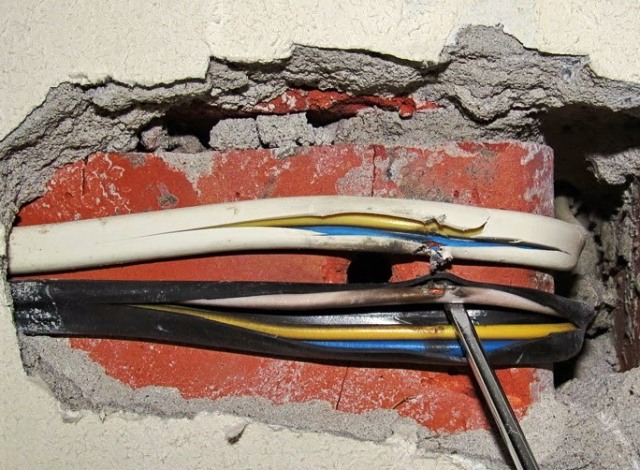
Theory
In the everyday sense, wires, cables and cords do not have significant design differences. The insulation or flexibility class of the core may be modified, but in both senses there is not much difference.
It is worth noting that, if we are talking about mobile equipment, for example: iron, electric drill, grinder, charging for the phone - their conductors are called electrical cords. If we are talking about wiring internal or external - such conductors are called cables (not always, depending on the product used), but if we are talking about connections inside devices or extensions, these are most often wires.

In principle, all cable products consist of:
-
Conducting veins, there can be one or several of them (up to tens of pieces), and by construction the veins are rigid monolithic or flexible multi-wire.
-
Insulation - a coating of dielectric material. It can be carried out in several layers, and if there is more than one core, usually the shell on each vein has its own and a common girdle sheath protecting all the veins. As insulation, PVC, rubber, impregnated paper, fluoroplastic, polyethylene, silk, polymers are used.
There are two electrical faults:
1. There is contact where it should not be.
2. There is no contact where it is needed.
This catch phrase contains the true essence of the electrician's repair and maintenance work. The first is various kinds of short circuits, and the second is breaks in the line and wires. If the insulation of the core is damaged, they either touch each other and a short circuit occurs, or the bare section of the core protrudes from under the shell, which can cause a short circuit to the ground or electric shock to someone who touches this section.
Practice
Let's move on to real situations when you need to fix a wire. Often fail:
-
Charger Cords for mobile phone;
-
Headphones
-
Drills and other power tools;
-
Irons, washing machines and other household appliances;
-
Extension cords.
Mobile Charger
Each of the cases is characterized by its own situation. Modern mobile phones are charged via a cable with a micro-USB plug. The cable most often connects to the power adapter using a regular USB connector.

The most common malfunction of the cord from the mobile phone is a break at the base of the plug, which is inserted into the telephone jack, as this place is more prone to bending.
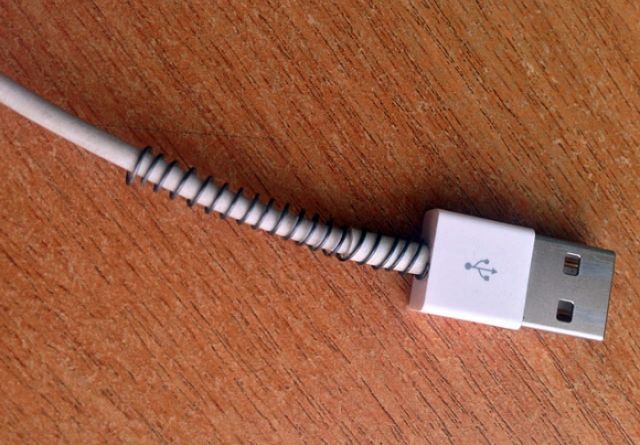
Repair of the cord in this case consists in fixing the place of the bend. This can be done using electrical tape or heat shrink tubing. And also putting on the place of the inflection spring from the ballpoint pen. Or buy special protection that you see in the photo below. It can hardly be called a repair, but rather a temporary extension of the cable life. Although if in advance to do so on a working cable - he will live longer.
The best solution is to replace the plug, but you need a soldering iron with a thin tip and a collapsible connector. You see its pinout in the picture below.
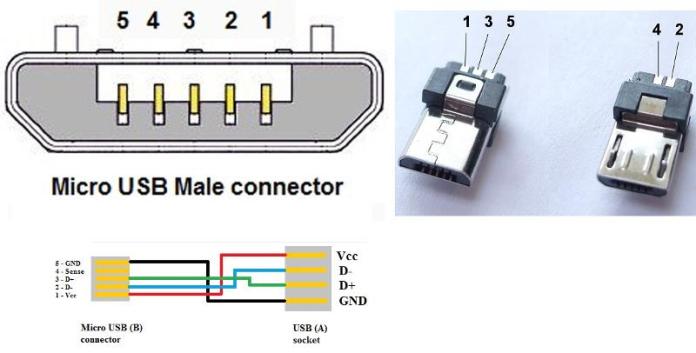
Headphone cord
The malfunction of the cord at the headphones is similar - a fracture near the plug occurs most often, less often near the headphones themselves or near the microphone, if it is a headset. The best repair is to cut off 5 centimeters of wire with a plug and solder a new plug.
Three popular and cheap types of 3.5 mm plugs can be distinguished, although dozens of types can be found on Ali-Express:
-
Collapsible with threaded connection and plastic case.The thread in them is poor and the plastic case starts to jump off.
-
With threaded connection and metal housing. The thread in them is better, it will be enough if you only need to carefully unscrew it once and twist it back.
-
Collapsible with a plastic case on the latch. It looks aesthetically pleasing, but I personally managed to solder normally after 5 attempts. Either the plastic case was not installed due to thickening of the solder on the plug, or cracked, or jumped off when pulling the jack out of the socket. A good option would be to put it on hot melt adhesive.
When repairing a headphone cord, there are some nuances:
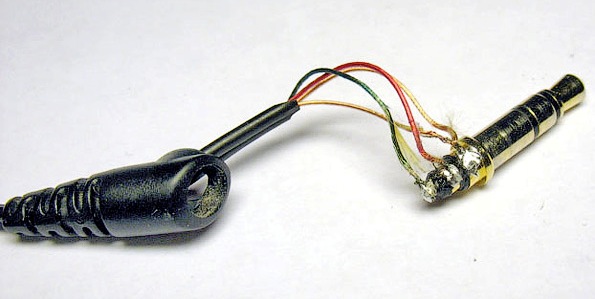
1. Before soldering and doing something, do not forget to put on the plug housing on the wire. This advice is ridiculous, but you will not be funny when you have to redo everything.
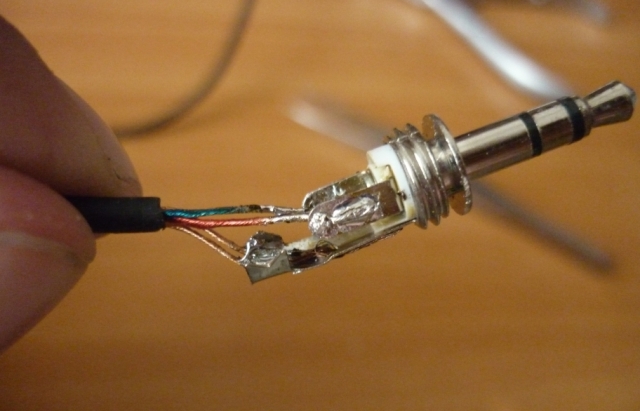
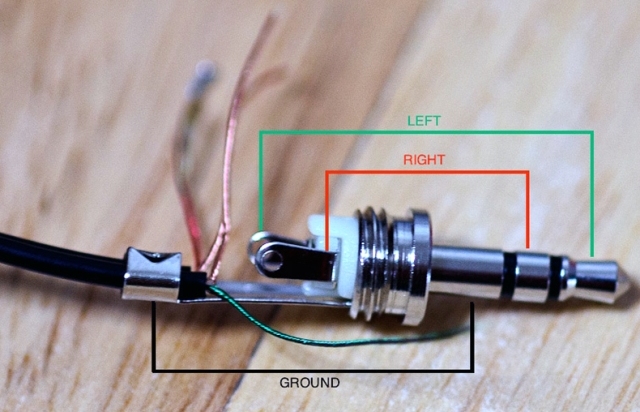
2. The core wires of the headphones and speakers are most often bare and varnished, usually the red and blue wires correspond to the left and right channels, and the copper color coated with opaque varnish is common. If the cores are covered with insulation, then the common wire can be a shielding braid of the wire.
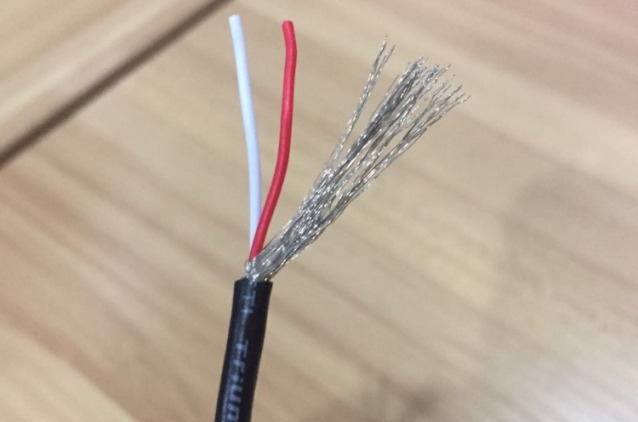
3. If the cores are varnished as described above, problems may arise with their tinning. There are three ways to do this:
-
Carefully strip the varnish with a knife or razor blade, but there is a risk of cutting the cores. They consist of wires thinner than hair.
-
Take a little tin on the soldering iron and lower the end of the core into the bath of hard rosin. A good way, but it does not always work, and to control the depth of tinning you need to get used to it.
-
Heat the end of the core with fire and remove the varnish with a napkin. Then carefully remove the loon and tin. A good way, but you need skill.
4. The connector also needs to be pre-tinned. Usually you can’t do it simply by rolling a drop of solder and rosin. Either active flux helps (the reliability of the connection worsens, but not significantly in this case), or preliminary cleaning with sandpaper or files the place you are going to tin. Flux paste also works. For example, I tinned green type F-2000.

5. Soldering and tinning are dangerous for the connector, although it is designed for this type of connection. The fact is that the contacts of the plug pass one in another like pipes or a telescope and are isolated from each other by a material such as plastic. With prolonged heating, it begins to melt, after which parts of the plug begin to dangle and rotate. There can be no talk of normal work. Solder correctly, in this case, an active flux will speed up the work, although it is dangerous for contacts over time. The question is whether headphones with such thin wires will survive before the contact breaks under the influence of active components of fluxes.
Dear plugs are soldered well, but it makes sense to install them only on expensive headphones, and in such cores they are easy to flood.
Repairing the wires of a washing machine, microwave, and other household appliances in household appliances most often breaks the wires of those appliances whose plug is regularly removed from the outlet. If the refrigerator, TV or computer most often remain on the network for years, then the wire of the washing machine, microwave, food processor is often plugged into a power outlet for the duration of use. Therefore, they break at mostly around the fork, since here this section is most mobile.
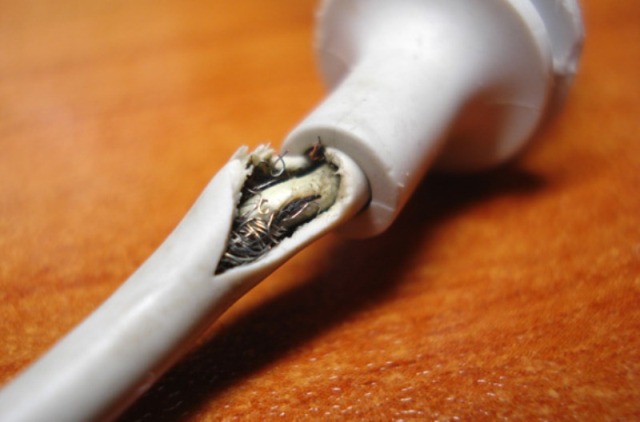
The best solution would be to replace the plug, since the one that is installed from the factory is usually not separable, the cast one needs to bite off the plug and the broken section of the wire is about 10 centimeters. The plug must be selected according to the power consumption and the convenience of the design.
On the technique, the wire of which you are folding to put it back on the shelf, for example, a blender or a food processor, it can break down on the base, where it enters the case, and in any other place.

You can find damage by gradual bending with movement along the entire length of the wire. In this case, you need to cut 10-20 centimeters of the damaged area, connect and insulate the cores.If after repair the length is greatly reduced - insert a piece of wire of a similar cross-section.
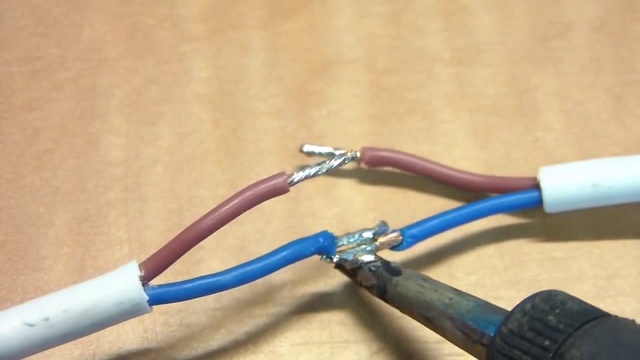
Connect by soldering or crimping. Twisting flexible flexible cords are best avoided. In extreme cases, use screw terminal blockshaving previously tinned the occupied ends of the wires.
You can isolate either with electrical tape or shrink tube. The latter option is preferable, and the electrical tape can unwind over time.
Repair cord drills and grinders
In these tools, the most loaded place is where the wire enters the housing. Usually the wire here is reinforced with a special casing preventing damage, but it does not save.
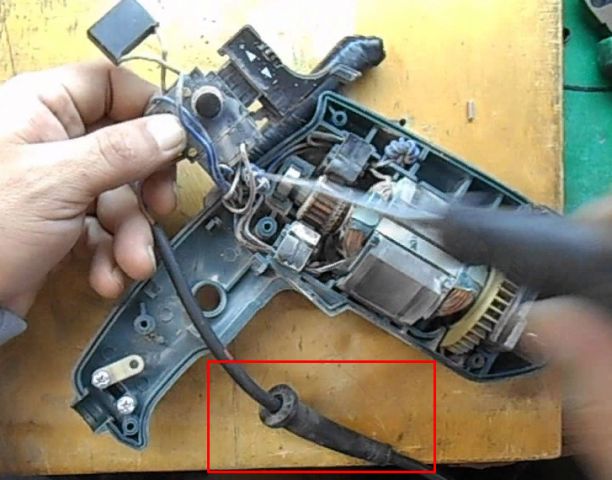
If you plugged in the drill, pressed a button, and it does not show signs of life, but when you move the wires near the handle, it starts to work - this is probably the problem.
Need to disassemble the drill and ring the wirePutting one probe on the output of the plug, and the other on one of the cores, do the same with the second core. Regardless of whether the buzzer squeaks or not - bend the wire in all suspicious places, if there is damage - you will hear it.
Repairing a drill wire is similar to the previous one - cut off the damaged area or change it entirely.
On the native wire at the entrance to the device’s case there is a protective casing, if it was not possible to remove it from the cut piece for secondary use, you can use heat shrink laid in several layers for this purpose (until you get the desired density of entry into the case), or use cambric, a piece of hoses, casings from other nodes and mechanisms of similar sizes, at worst - electrical tape.
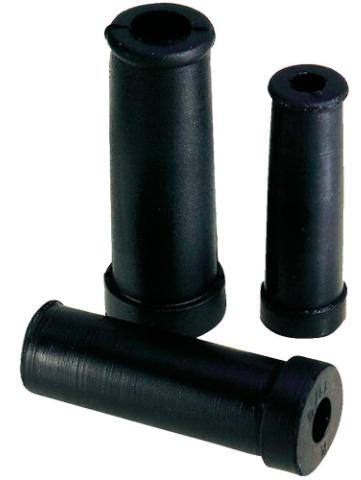
In the photo, a protective clamping tip
If the design of the drill involves the unity of the supply wire with the internal circuit using a screw clamp - do not forget to tin or pinch. Stranded cores cannot be clamped with screw terminal blocks because you will not get good contact.
Repairing the cords of hair dryers, plates, and other hand-held electrical appliances is performed in a similar way. Irons are an exception, for them there are special cords in a fabric braid to protect against hot soles and rubbing on the edges of the ironing board. Typically, such cords are sold and changed whole.
Extension cord repair
Carrying or an extension cord is a convenient device that is actively used in everyday life, in production and at construction sites, from the nearest outlet or electrolyte to the place where you want to connect an electrical device.
Therefore, they often attack him, put something and so on. This leads to something that the insulation is damaged, or the conductors break off, or they are shortened inside the cable, after which the plug, socket or knocks out an automaton.
In this case, similar to the previous ones, you need to cut a piece of wire and replace it with a working one. Or connect the remaining ones.
Attention:
Do not allow more than 3-5 connections and do not turn the extension cord into a garland of pieces. This is dangerous and there is an increased risk that the insulation on one of the connections will wear out over time and someone will be shocked.
Be sure to insulate the joints with heat-shrink tubing and electrical tape. This is extremely important as the cable is movable and the insulation can wear.
Cable repair in wiring
Regardless of how the line is laid, internal or external repair is allowed. If a break occurs - change the damaged area or the entire line. If insulation damage has occurred, you can repair it with heat shrink, cambric, insulation and other insulating materials.
Conclusion
IN “Instructions for the operation of power cable lines” Part 1 (lines with voltage up to 35 kV), it is said that it is possible to restore cable covers using heat-resistant varnishes, PVC tubes, plastic patches, fiberglass tape and more. It means that all of the above repair methods are fair and allowed according to the instructions.
To repair cables and wires in modern conditions, a PVC tube or heat-resistant fiberglass cambric is best suited. The latter are suitable for restoring the insulation of wires that pass near heating elements, for example, in an iron or boiler.
This is not to say that insulation is not at all suitable for wire repair. It’s just that it can unwind over time, and the fabric tape can pick up moisture, and it is not suitable for use in wet conditions.
See also at bgv.electricianexp.com
:
